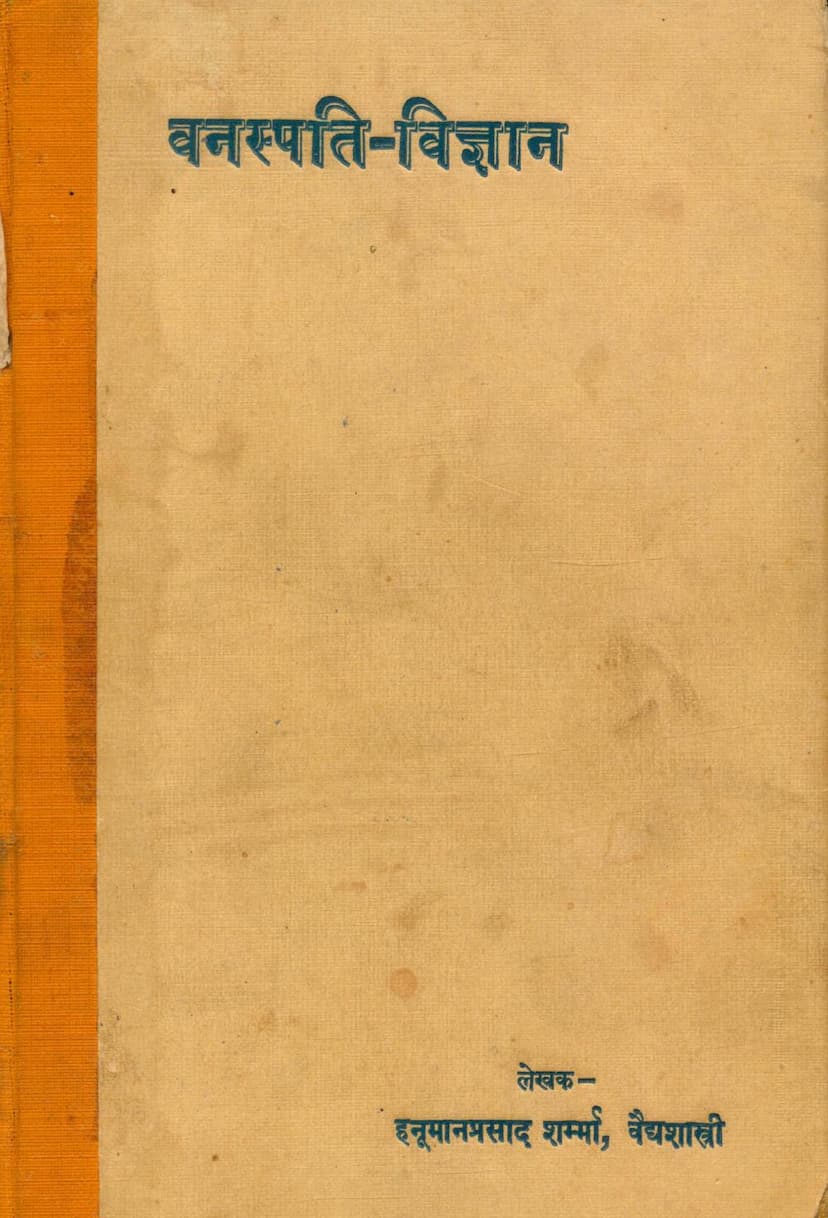Vanaspati Vigyan
Added to library: September 2, 2025

Summary
The book "Vanaspati Vigyan" (Botany/Herbal Science) by Hanumanprasad Sharma, published by Mahashakti Sahitya Mandir, is a comprehensive Ayurvedic text focused on the medicinal properties and uses of various plants. The author, a Vaidyashastri (Ayurvedic physician), aims to revive and present the knowledge of herbal medicine, which he believes has been diminished due to lack of understanding and the transition from oral traditions to written texts.
The book emphasizes the significance of Ayurveda as a vital part of the Vedas and highlights that the current division of medicine into branches like botany, rasa (mineral/metallic), and surgery is a later development. Sharma laments the general ignorance of people regarding plant-based treatments, even when plants are readily available and visible. He attributes the loss of detailed knowledge to the shift from memorization to written records, which were originally on perishable materials like birch and palm leaves.
Sharma acknowledges the advancements made by modern scientists in botany but points out that their research is often too complex for the common understanding and doesn't always translate into direct benefits for the human body. He expresses his intention to bridge this gap by making the knowledge accessible to the common populace. The author clarifies that the term "Vigyan" (science) in the book title refers to specific knowledge about a subject, not just the Western concept of "Science."
The book meticulously details numerous plants, providing their Sanskrit, Hindi, Bengali, Marathi, Gujarati, Kannada, Telugu, Tamil, Arabic, Persian, English, and Latin names. It outlines their properties (Guna), actions, and specific uses for various ailments. The text is structured with a detailed subject index, including sections on preliminary knowledge, the five elements (Panchatatva), the human body's elements, Ayurveda's principles, different medical practices, and then a comprehensive list of medicinal plants with their detailed applications.
Key themes and content:
- Ayurveda's Importance: The book begins by establishing Ayurveda as a crucial and ancient system of medicine, calling it the "fifth Veda."
- Revival of Herbal Knowledge: The author's primary goal is to reintroduce and explain the profound knowledge of medicinal plants, which he feels is being lost.
- Accessibility of Knowledge: Sharma intends to make complex Ayurvedic knowledge accessible and practical for the common person.
- Plant Descriptions: Each plant is described with its various names across different languages, its physical characteristics, and its pharmacological properties (Guna).
- Therapeutic Applications: The majority of the book is dedicated to the medicinal uses of each plant, detailing how they can be used to treat a wide range of diseases and conditions, from common colds and fevers to more severe illnesses and ailments.
- Holistic Approach: The book touches upon the interconnectedness of the body, mind, and environment, with sections on the five elements and the human body.
- Comparison with Modern Science: While respecting modern scientific discoveries, the author subtly highlights the practical and holistic benefits of Ayurvedic herbal medicine.
- Practical Guidance: The text offers specific dosages, methods of preparation (e.g., decoctions, powders, oils), and forms of administration for each remedy.
- Extensive Coverage: The book features a vast array of medicinal plants, covering a wide spectrum of therapeutic uses, making it a valuable reference for anyone interested in Ayurvedic pharmacology.
- Focus on Indian Flora: The selection of plants primarily includes those that are easily accessible and commonly found in India.
The book is a valuable resource for understanding the traditional Indian system of medicine, particularly its emphasis on the therapeutic power of plants. It serves as both a repository of ancient wisdom and a practical guide for utilizing nature's remedies.